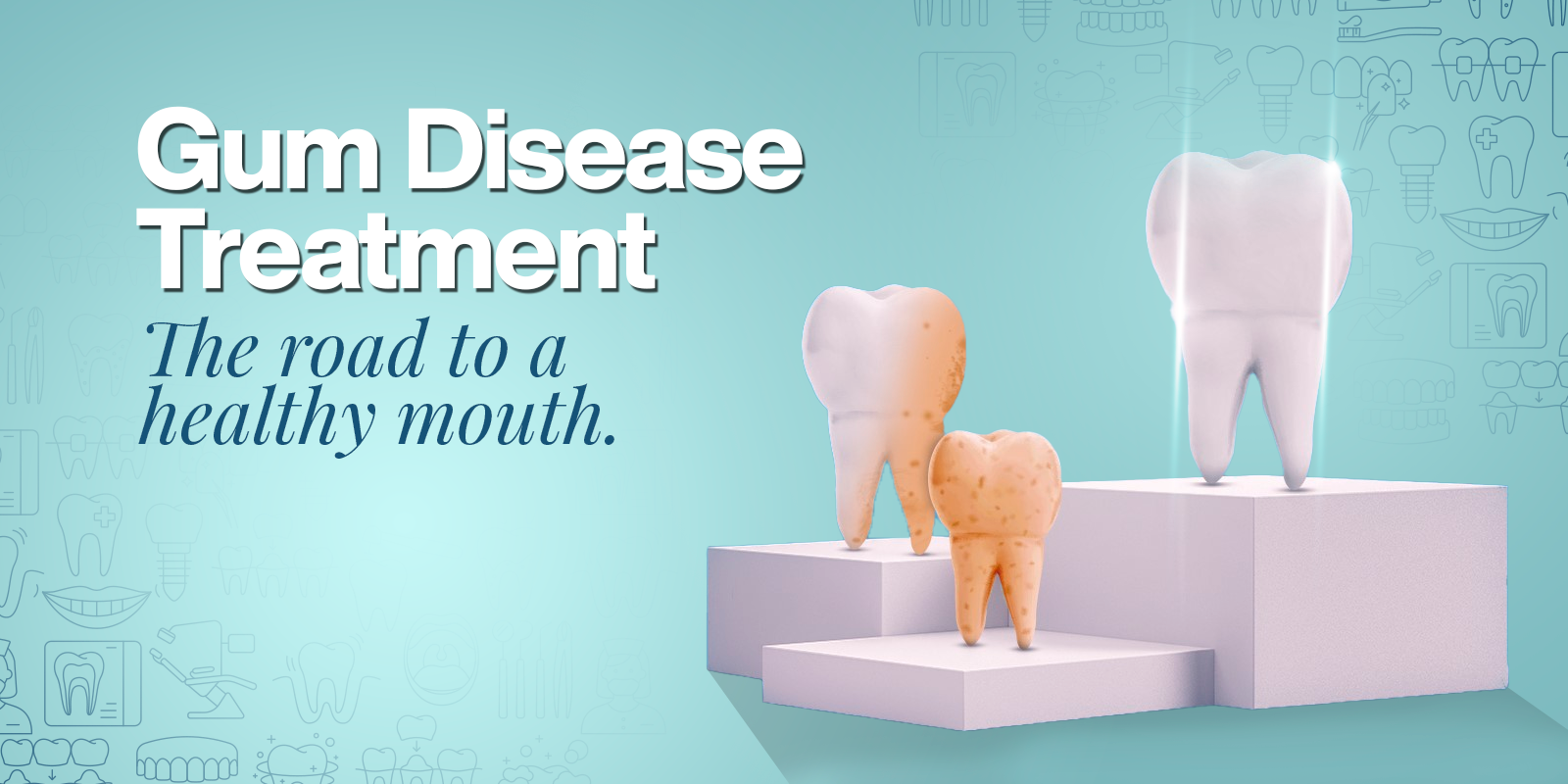
Pyorrhea Treatment in Ahmedabad
Have you recently noticed a speck of blood in your sink while brushing your teeth? Gum disease can cause bleeding, which is one of the early indicatoḤrs of the condition.
Gingivitis is a mild disease. The infection can spread past the gum line and into the bone if left untreated. Then it progresses to periodontitis, a more dangerous form of gum disease.
Periodontitis and gingivitis have been linked to an increased risk of diabetes, heart disease, osteoporosis, pneumonia, and even cancer.
Symptoms of Gum Disease
If you know what you are after easily, you can detect and address the problem before it becomes severe.
One of the first indicators that your gums require attention is red, puffy gums. "Inflammation along the gum line is usually the first sign of gum disease," explains Erik Sahl. They may also be uncomfortable or painful, and flossing or brushing them causes them to bleed readily.
Bad breath: Millions of germs make their home in your mouth, which is lovely, warm, and wet. It's also a sign of more severe gum disease. If you have gingivitis, your breath typically doesn't change much.
Gums that shrink: If your teeth appear longer than they used to, they're probably not.
Sensitive teeth: If a sip of cold water makes you squirm, your teeth are probably trying to tell you something. This is a prominent symptom of gum disease that frequently occurs in conjunction with shrinking gums. "When the gums recede, the sensitive component of the tooth, called the dentin, is exposed, creating sensitive teeth when they are exposed to cold water and air," Sahl explains.
Do you have wiggly or moving teeth? Has your grin changed recently? Gum disease can weaken or shift your teeth by attacking the bones that keep them in place. The most common cause is periodontitis, which can alter how your teeth fit together when you bite. Find out more about the numerous adult teeth straightening solutions.
Make Sure You Establish a Daily Oral Health Routine
Plaque accumulation, which is left behind due to poor oral hygiene, is the most common cause of gum disease. Gingivitis, caused by plaque buildup, can be a significant disease if not treated properly. Plaque clearance that is insufficient or irregular in your dental health care regimen can cause considerable problems for your gums and teeth. It is necessary to brush twice every day, flossing once a day, and rinsing twice with an effective mouthwash. To keep oral health concerns at bay, it is vital to visit a dentist regularly for complete professional teeth cleaning. Furthermore, in severe circumstances, dentists may recommend surgery.
How Can Dental Cleaning Help?
Regular dental appointments and professional cleaning ensure a healthier mouth. At least once every six months, you should visit the dentist for a standard checkup to remove plaque buildup that has formed and check for any dental issues. Take your hygienist's or dentist's recommendations on how to improve your oral health.
A standard checkup by your dentist is included with regular dental cleaning. Tartar can be eliminated by a dentist who thoroughly cleans and removes it from both below and above the gum line. In extreme cases, the dentist may recommend professional dental cleaning more than once every six months.
How Can Dental Restorations Help?
This procedure is used to replace tooth features that have been lost due to tooth weakness, decay, or fracture. Your dentist may use a dental restoration to replace or restore lost pieces of your tooth or work on the overall structure.
A periodontist is a dentist specializing in diagnosing and treating gum disorders. They also assist in the prevention of gum disease. They concentrate on the teeth' supporting bones and gums.
A dentist is a general practitioner who cares for your teeth and gums. A dentist can help with available gum and tooth problems.
Advanced Periodontal Disease Treatments
If gingivitis has advanced to periodontitis, a more thorough treatment will be required. Root planing/deep cleaning, as well as scaling, are included.
Scaling is a procedure that eliminates tartar and plaque from beneath the gum line.
Root planing reattaches the gums to the tooth by smoothing the roots.
You could begin by visiting your dentist. Depending on the severity of your condition of periodontitis, your dentist may recommend you to a periodontal disease specialist (periodontist).
